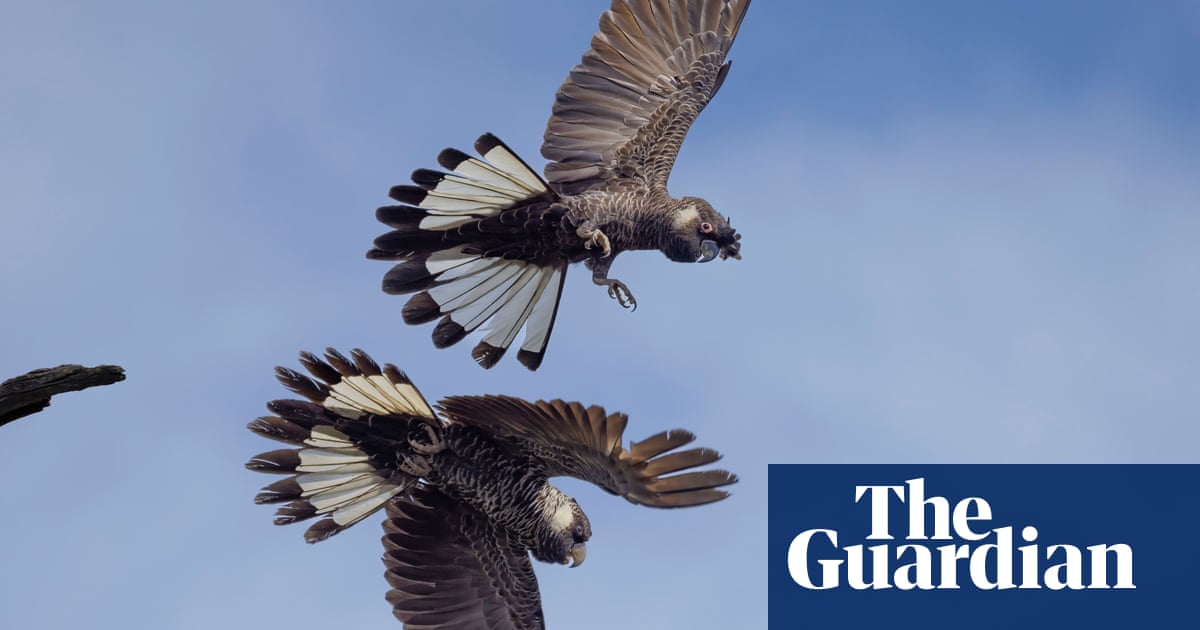Western Australia’s endangered cockatoo among world’s longest-living birds

- by Admin
- November 27, 2024

Western Australia’s endangered Carnaby’s cockatoos can live up to 35 years in the wild, making them one of the longest-lived bird species, according to a study that began in 1969.
Eight Carnaby’s cockatoos aged between 21 and 35 years have been recorded, according to research published in Pacific Conservation Biology.
The oldest bird, at 35 years old, was first recorded as an egg in August 1986. The report co-author Peter Mawson, a researcher with Western Australia’s biodiversity department, said the male cockatoo “looked as healthy as the day he left the nest”, and was still breeding when last sighted in 2021.
Carnaby’s cockatoos are large black birds with white cheeks and tail panels, which only occur in south-western WA. They mature late, produce few young, and have low survival rates in their first year of life, Mawson said.
“They have to live that long to guarantee they can produce enough offspring to replace the breeding pair,” he said. Most of the oldest birds were still with their breeding partner, or in a nest with a nestling when last spotted.
The population at Coomallo Creek, between Perth and Geraldton, has been studied for more than 55 years, with researchers visiting each breeding season during 1969-1996 and 2009-2023. Modern camera technology made it possible to read identifying bird bands, even when the cockatoos were in flight.
The age of wild Carnaby’s cockatoos placed them in the top 2% of long-lived birds recorded according to Australia, UK and US bird band registers, the study said. Shearwaters, albatross, cormorants and petrels were among those reaching maximum life spans of 40-plus years.
Cockatoos were known for their long lives in captivity, the paper said. “There is a saying in Australia, that if you are given a cockatoo for your 21st birthday, you should provide for it in your will as it will probably outlive you.”
Mawson said birds in captivity had the advantage of being fed, and not getting eaten, “but to live more than 30 years in the wild and still be breeding is a pretty impressive effort”.
In the wild, Carnaby’s cockatoos relied on large nesting hollows in ancient wandoo and salmon gum trees, and foraged on native species such as banksias, dryandras, hakeas and grevilleas.
after newsletter promotion
Glenn Dewhurst founded Kaarakin, a black cockatoo sanctuary in Perth, which houses more than 300 birds.
Carnaby’s were messy eaters, Dewhurst said, creating wastage on the ground that provided a food source for other birds and animals.
A lot of native vegetation had not flowered in recent years, he said. “For the first time ever, we’re getting birds that are starving.”
Common in the 1950s, the population of Carnaby’s cockatoos declined due to clearing of their habitat in the wheatbelt, a bounty on the birds to protect pine plantations (revoked in 1982) and traffic collisions on major highways.
Carnaby’s cockatoos have visibly shrunk in number during Mawson’s lifetime. As a child he would see thousands of birds in a flock, he said. “Now, if you see more than a hundred birds in a flock, you’re doing really well.”
The Latest News
-
November 27, 2024Should Steve Smith be dropped after Adelaide Test? Damien Martyn gives nod to fan suggestion of removing Australia star after 2nd Test | Sporting News India
-
November 27, 2024When does the 2025 Australian Open start? What’s the schedule? Who is playing?
-
November 27, 2024Qinwen Zheng Faces Unexpected Challenge at 2025 Australian Open
-
November 27, 2024Western Australia’s endangered cockatoo among world’s longest-living birds
-
November 27, 2024Matildas ‘legend’ Clare Polkinghorne to bid farewell amid end of an era against Brazil





